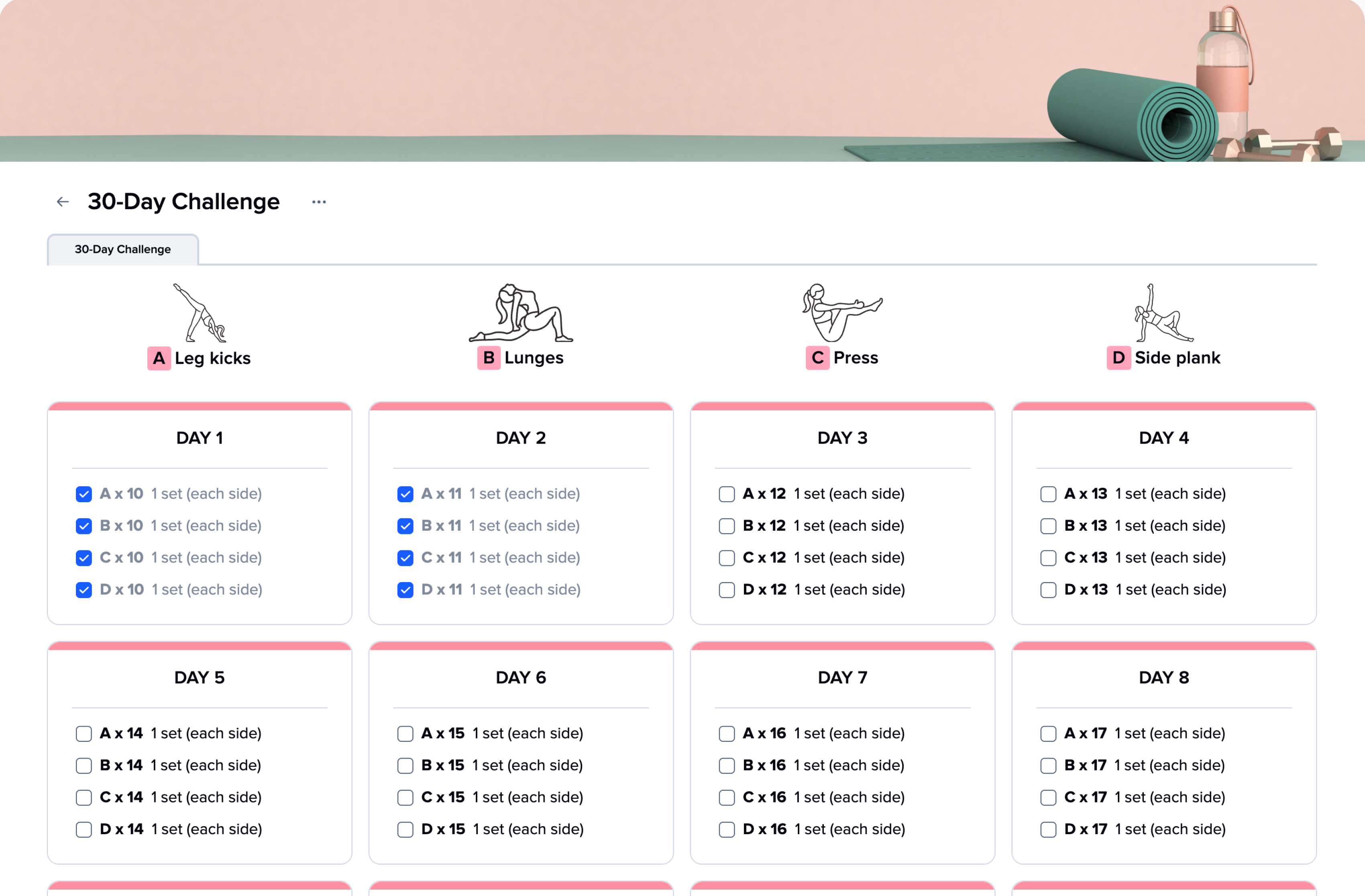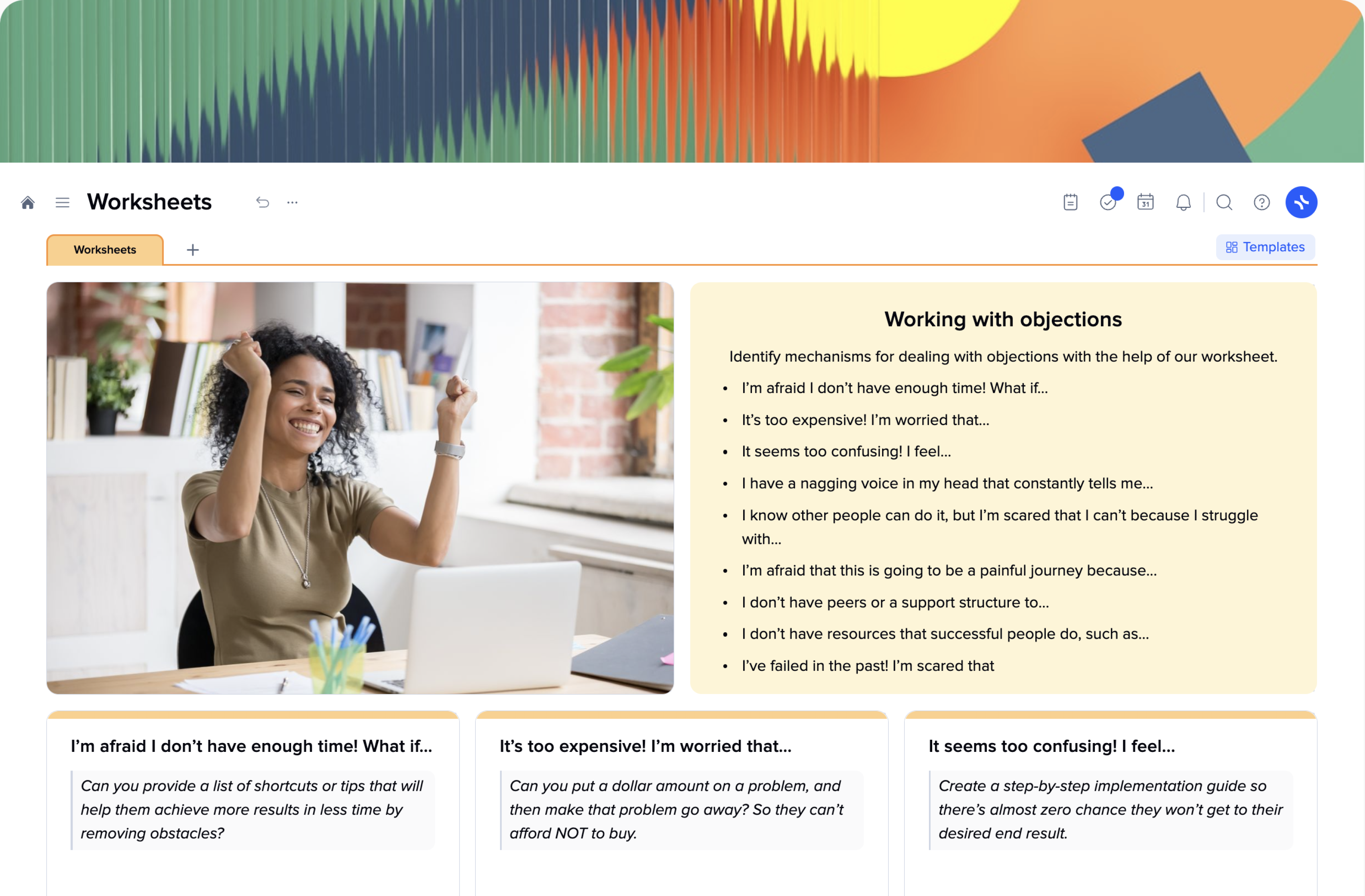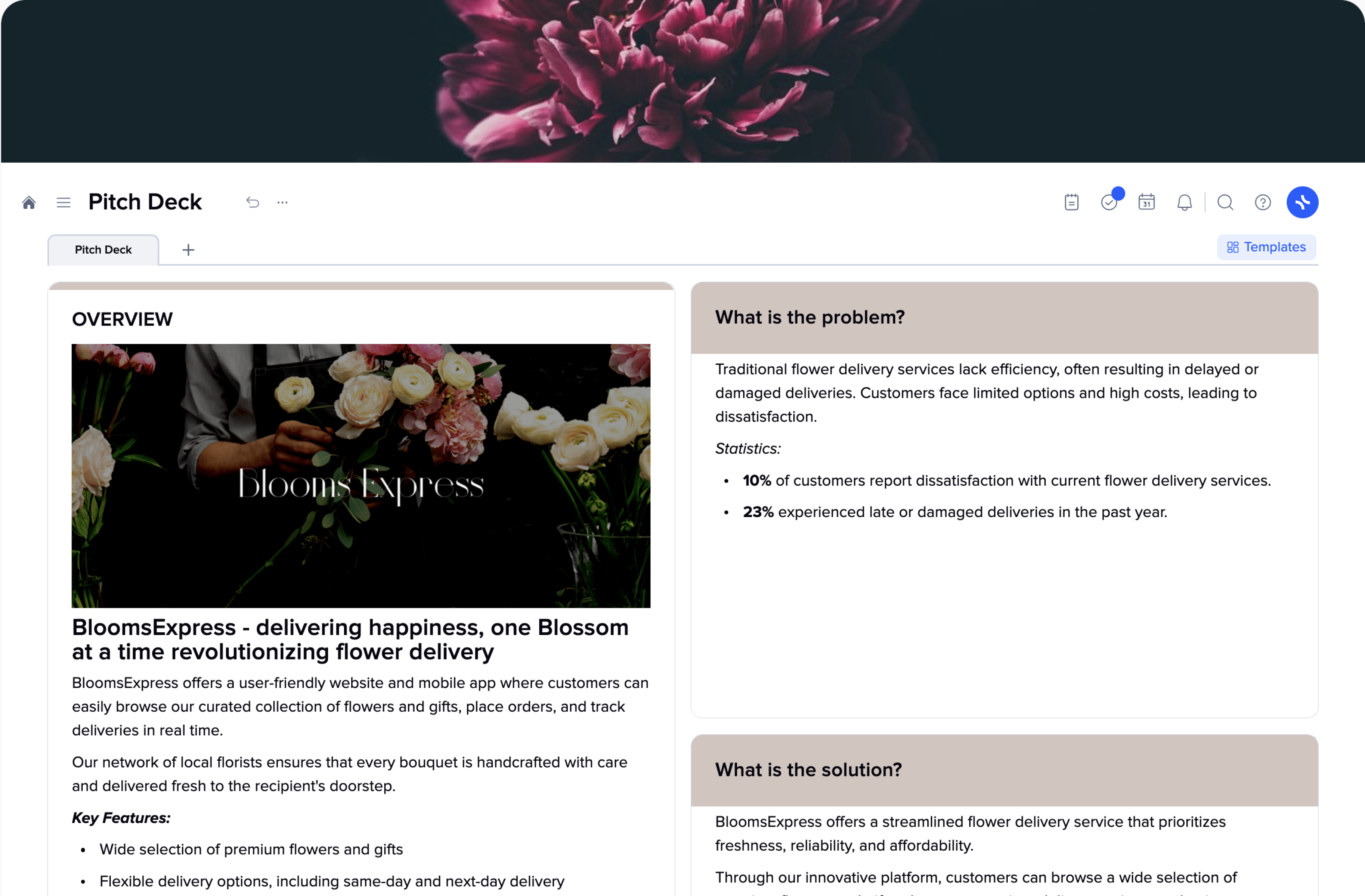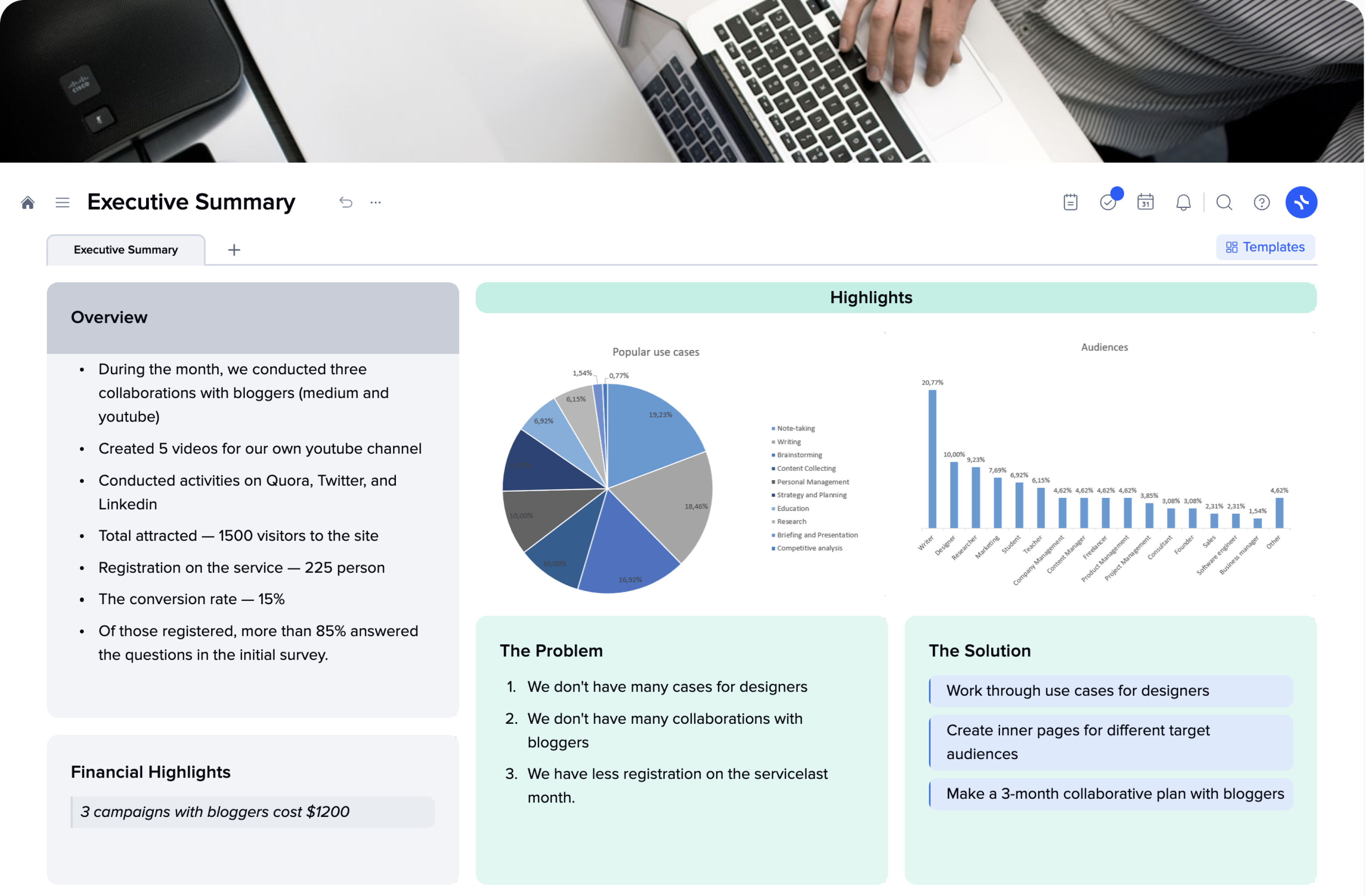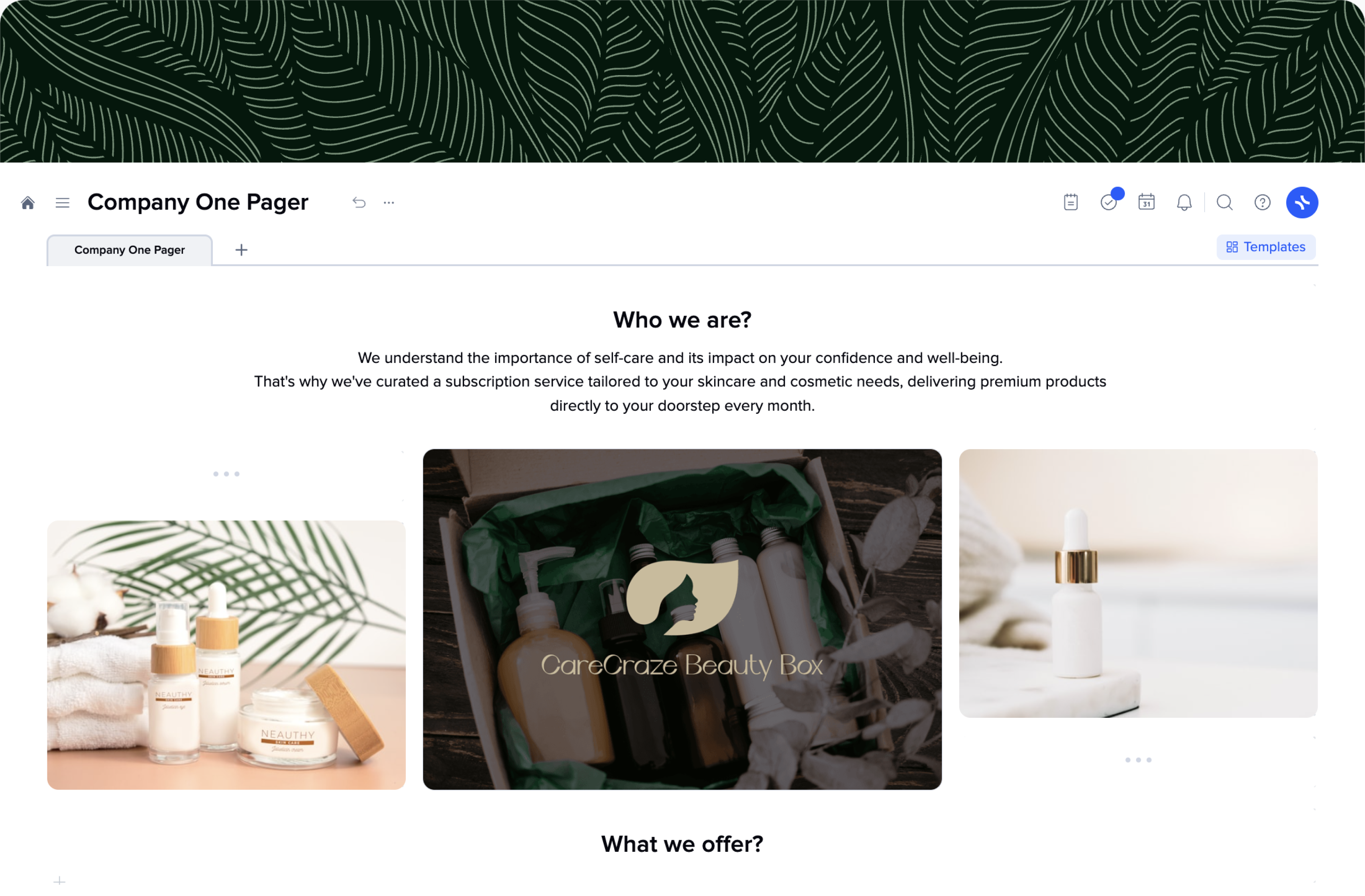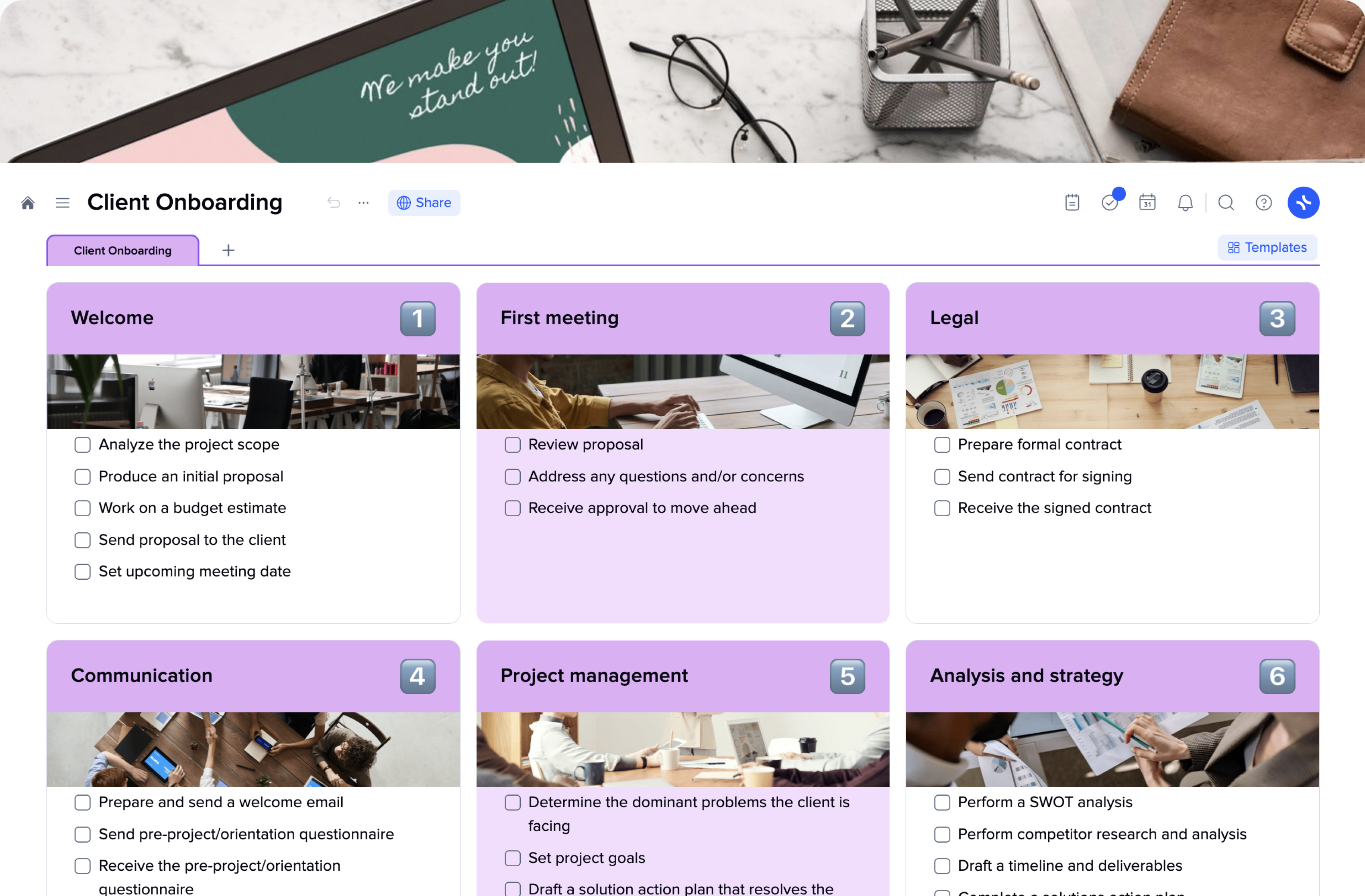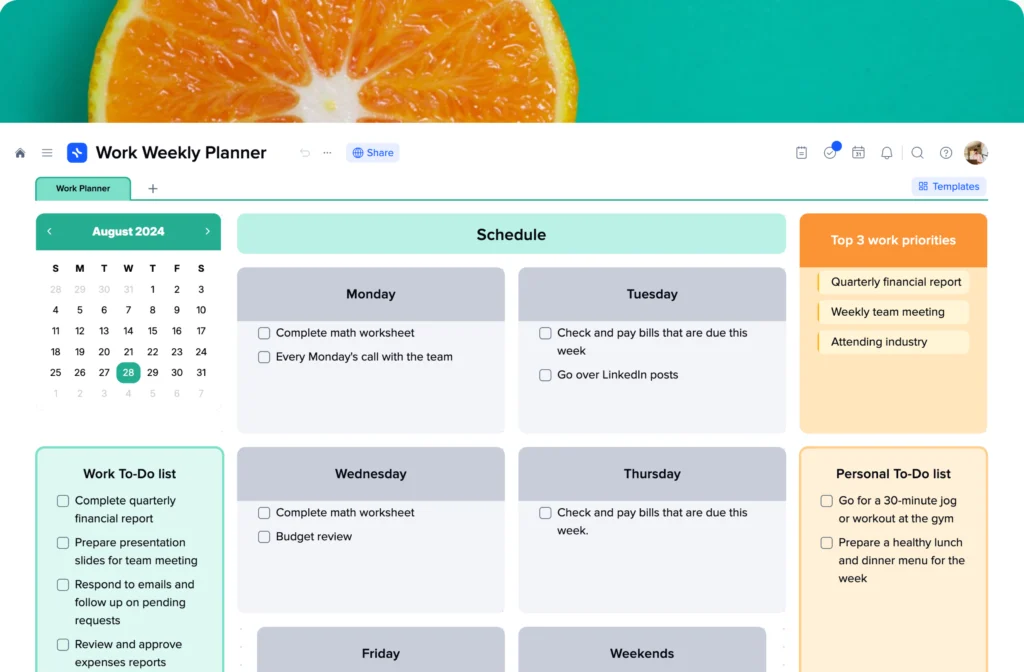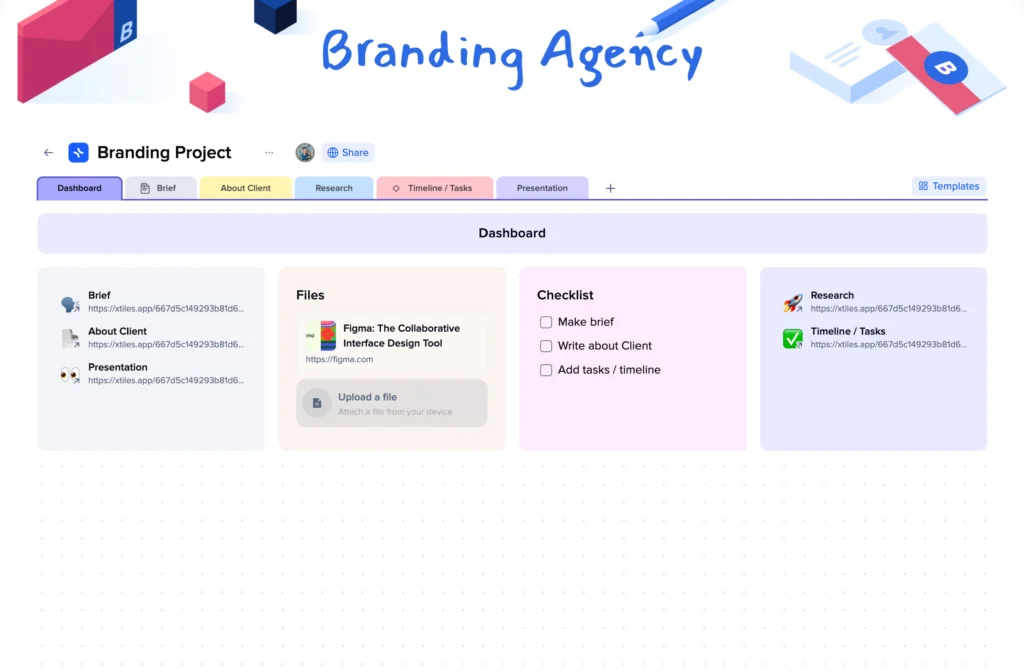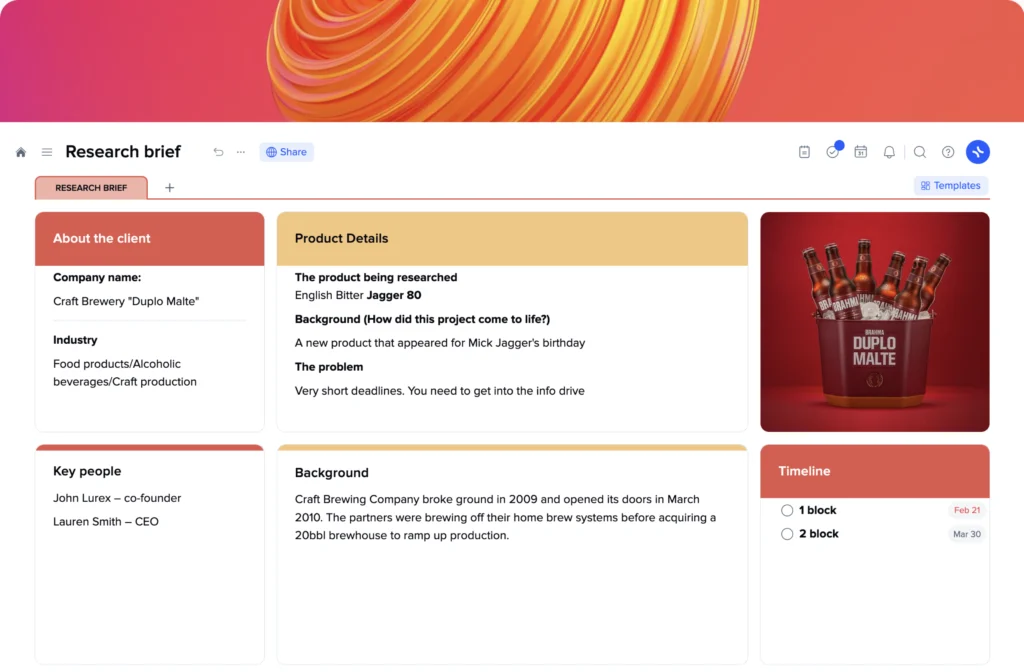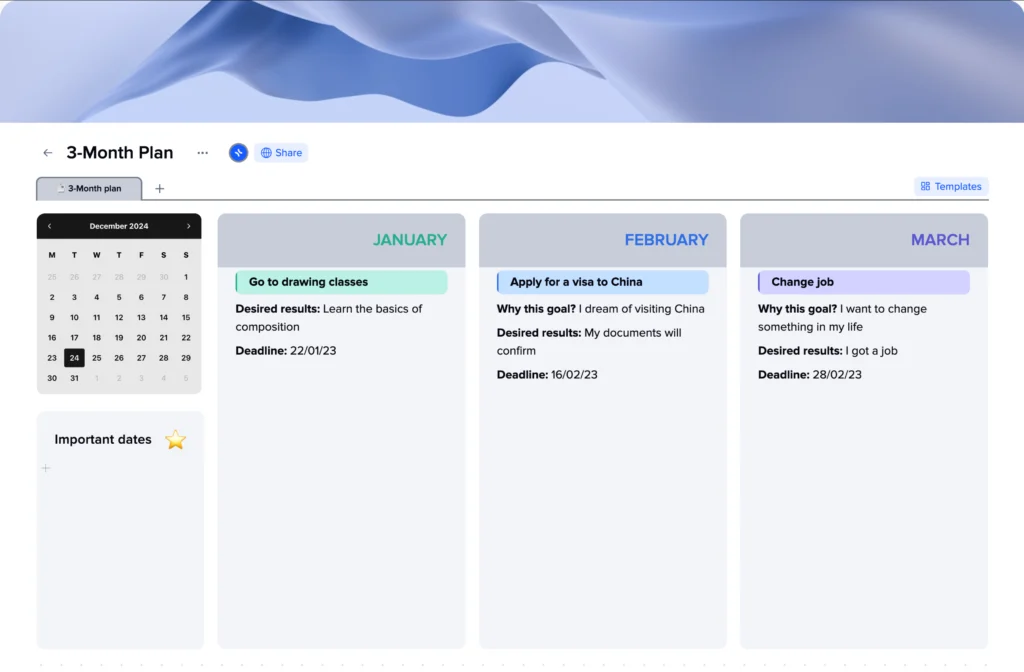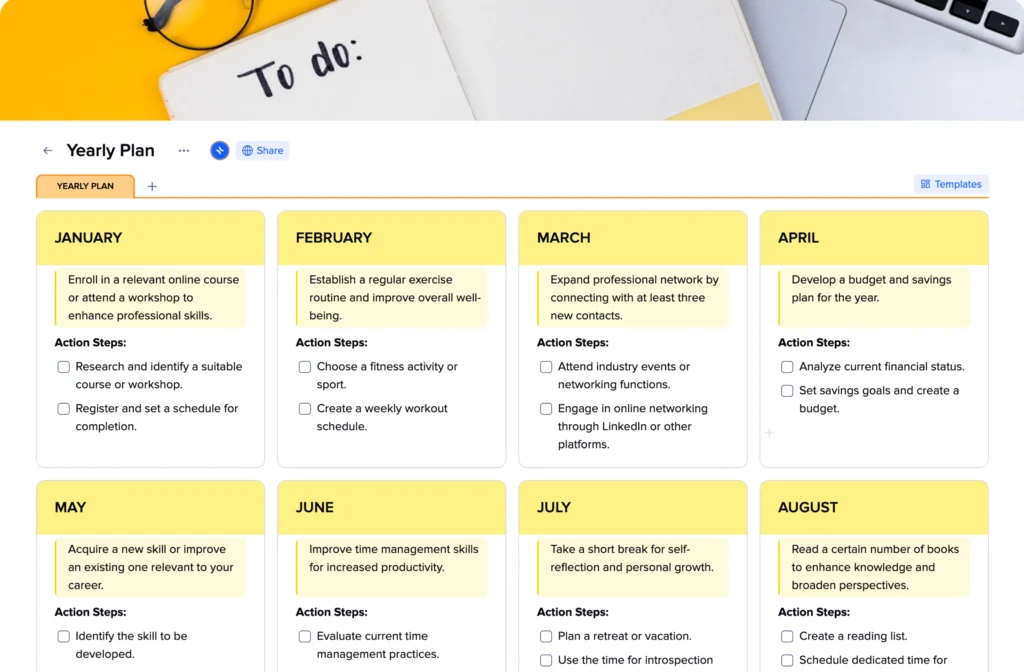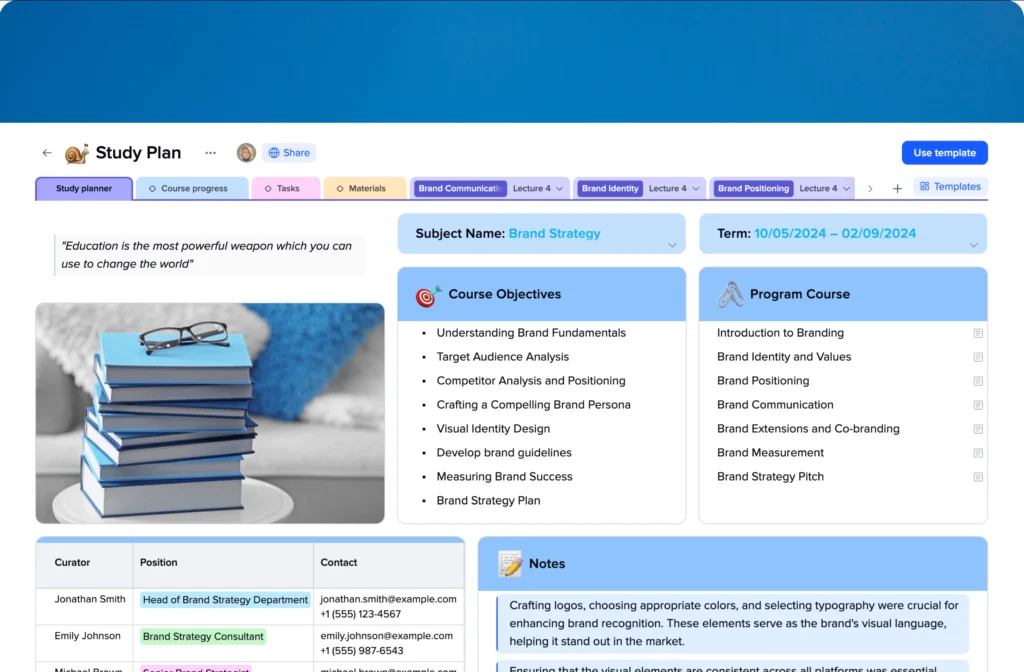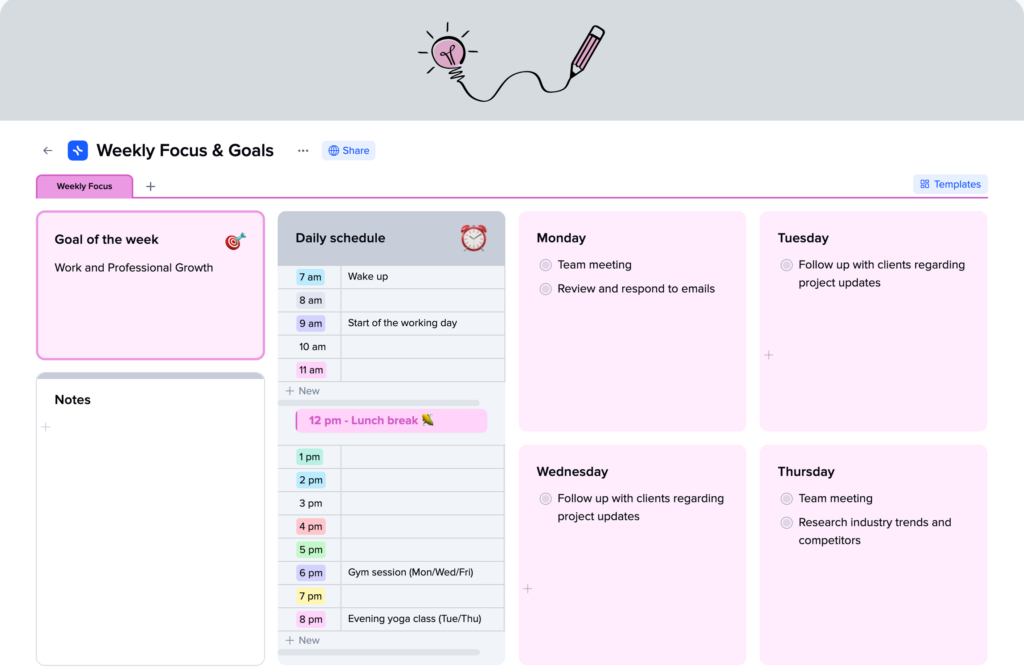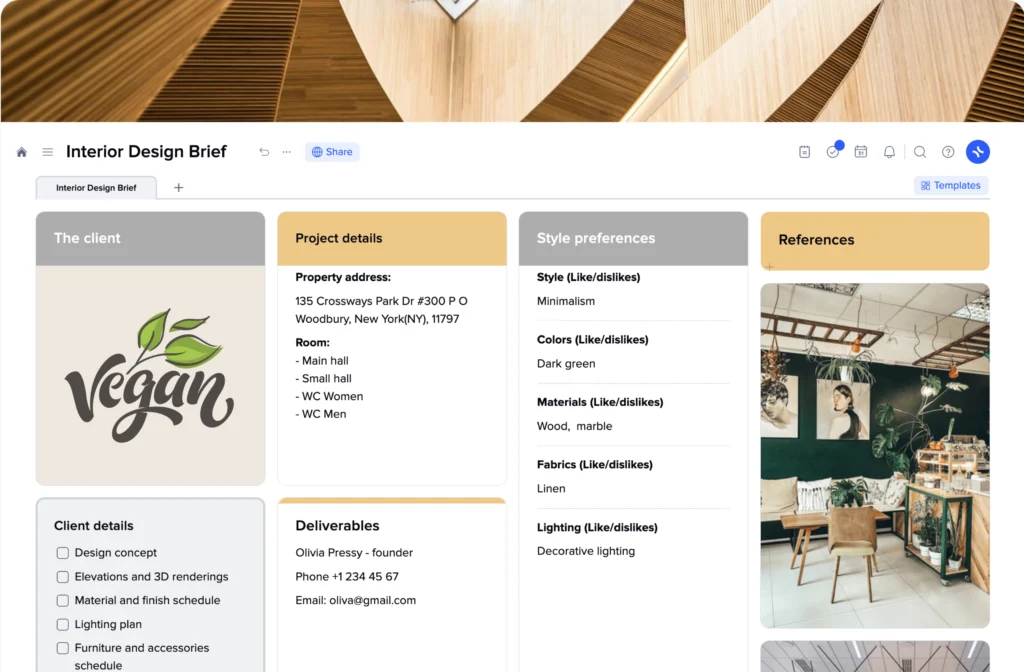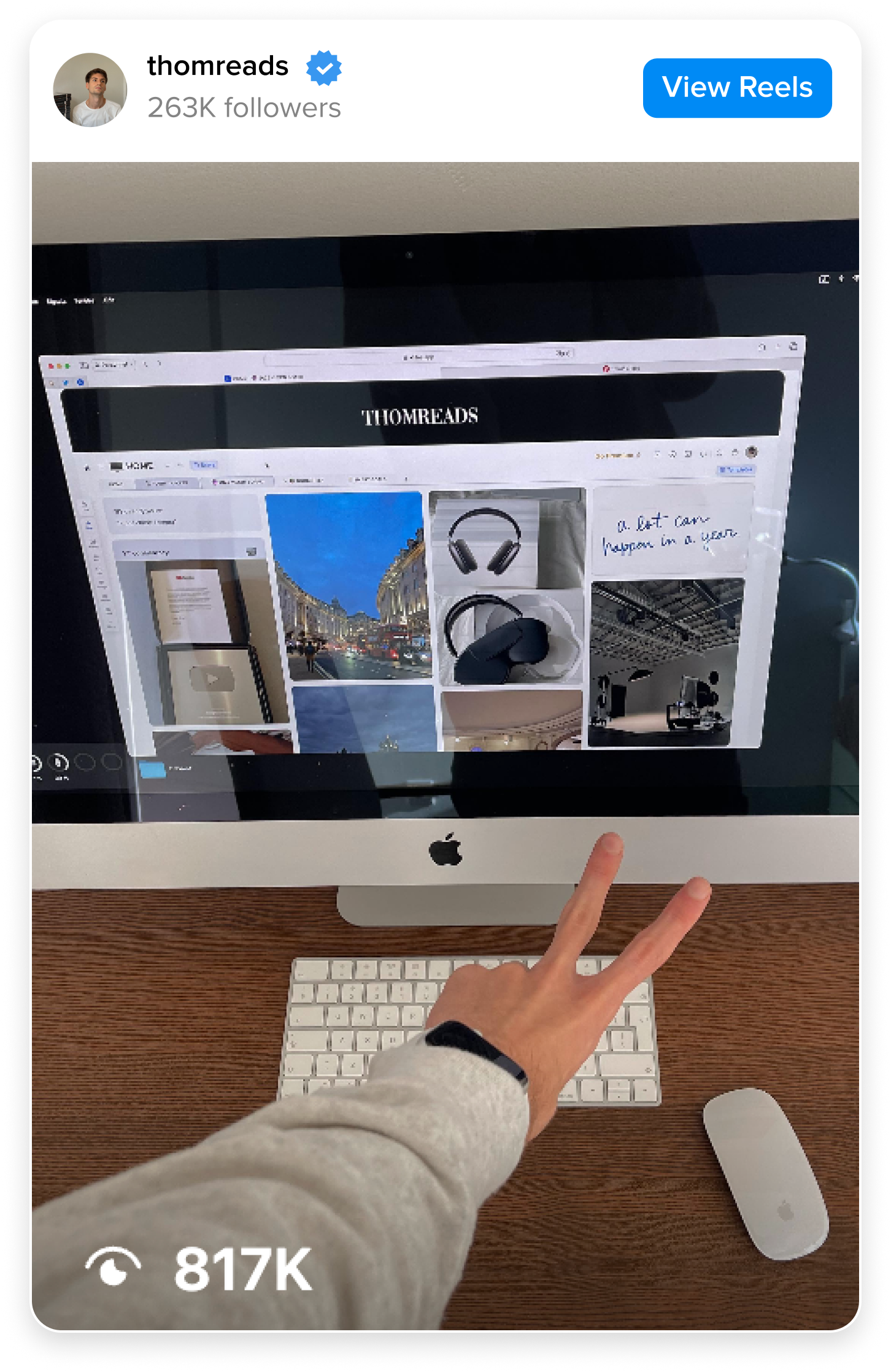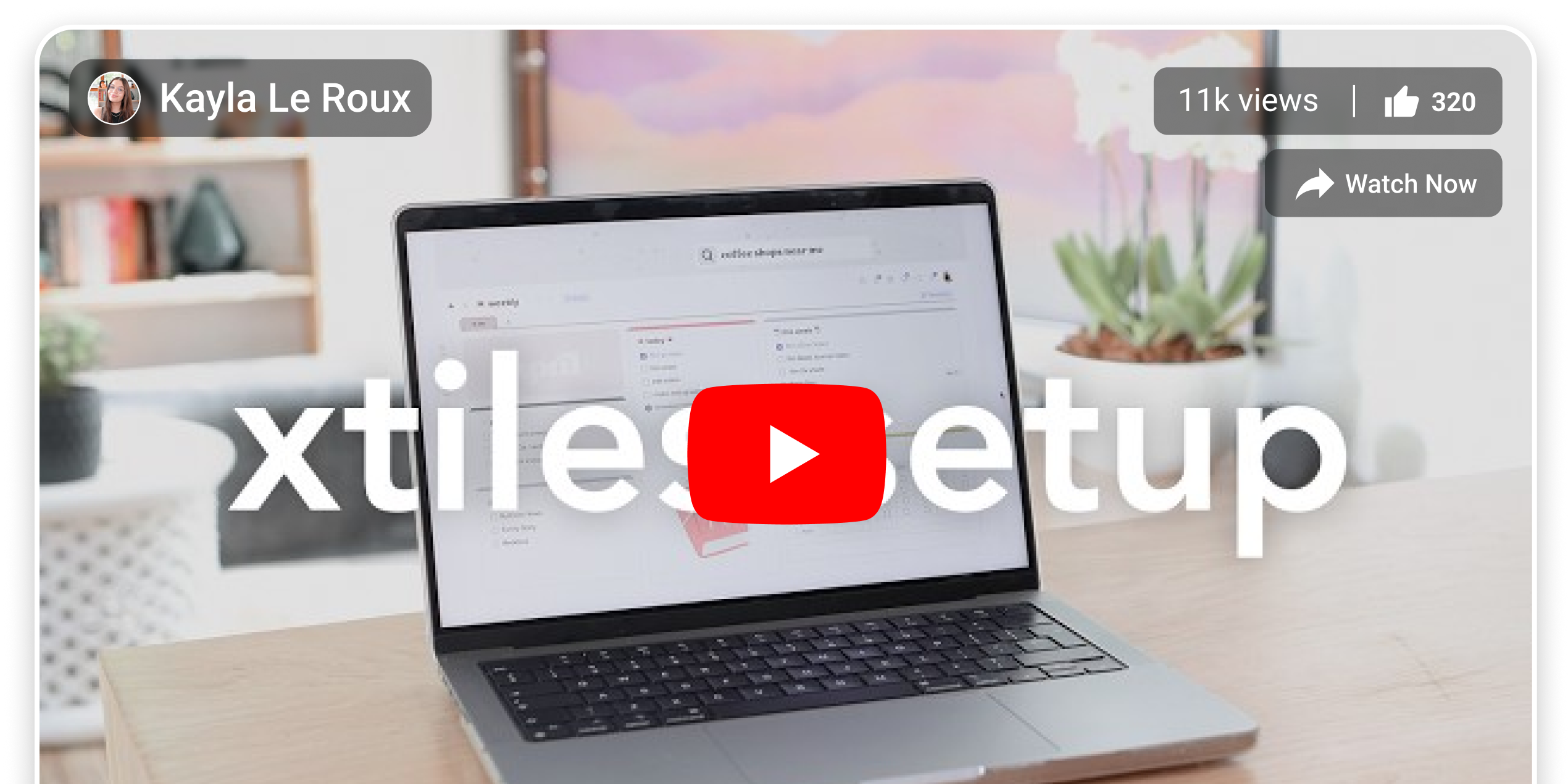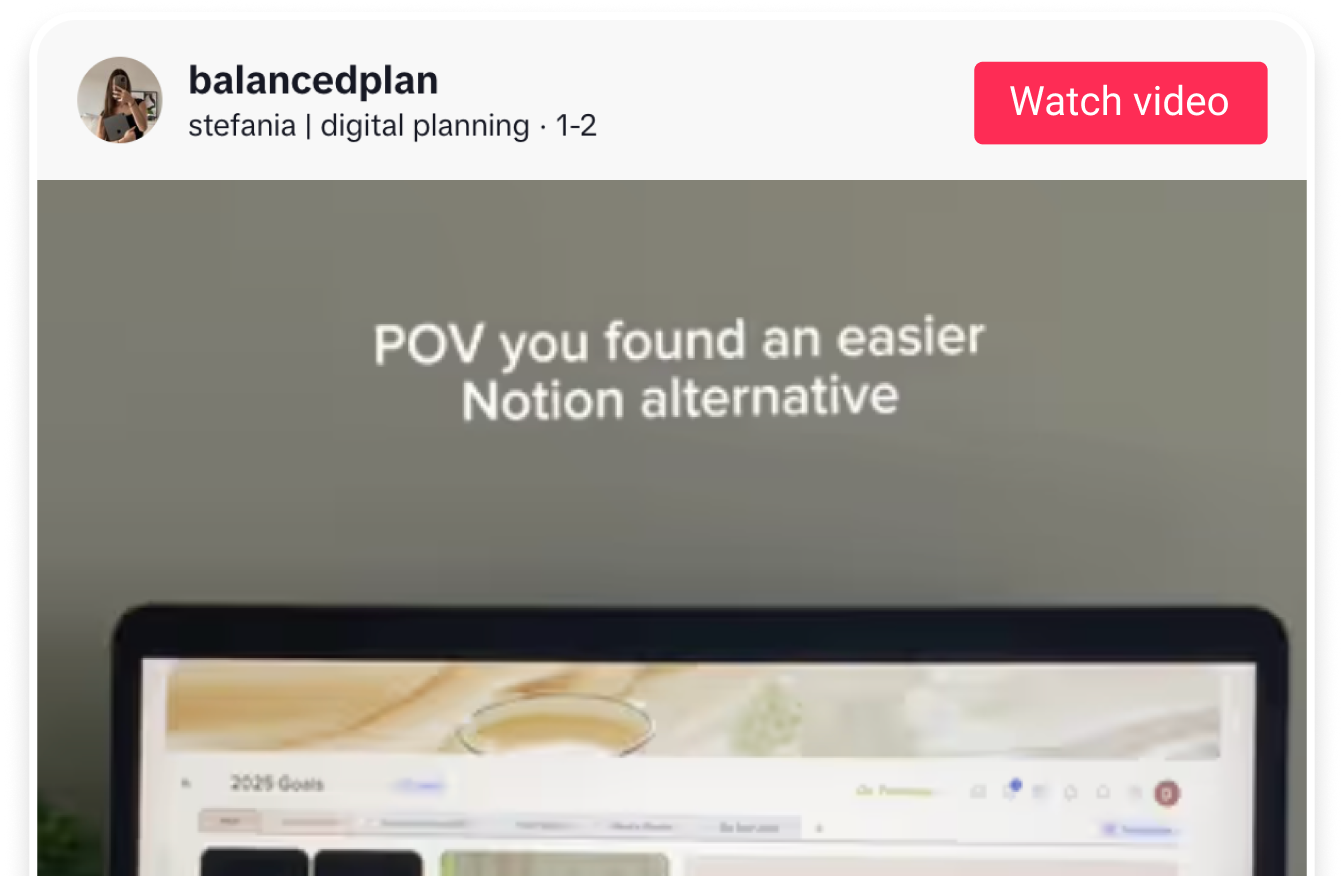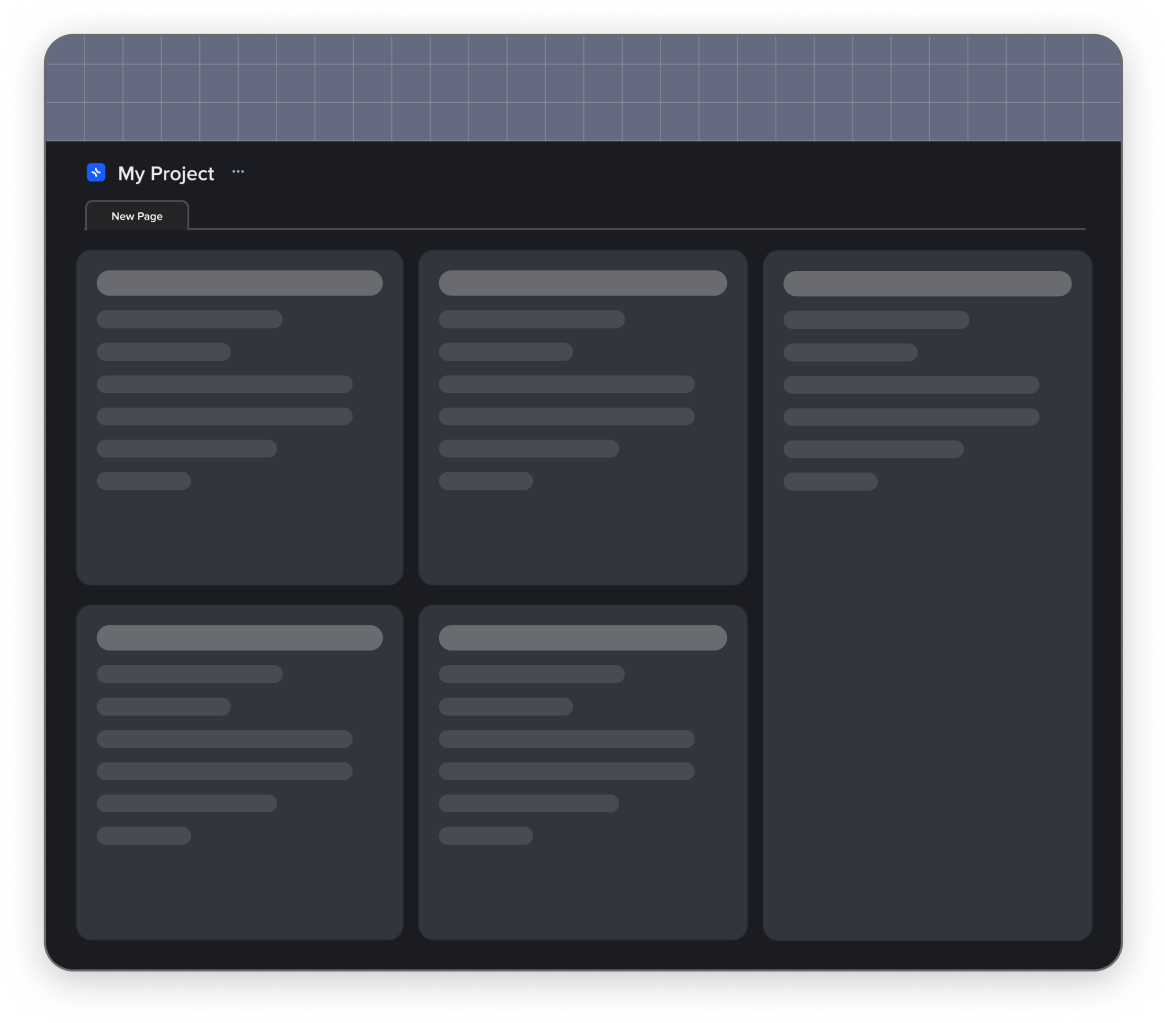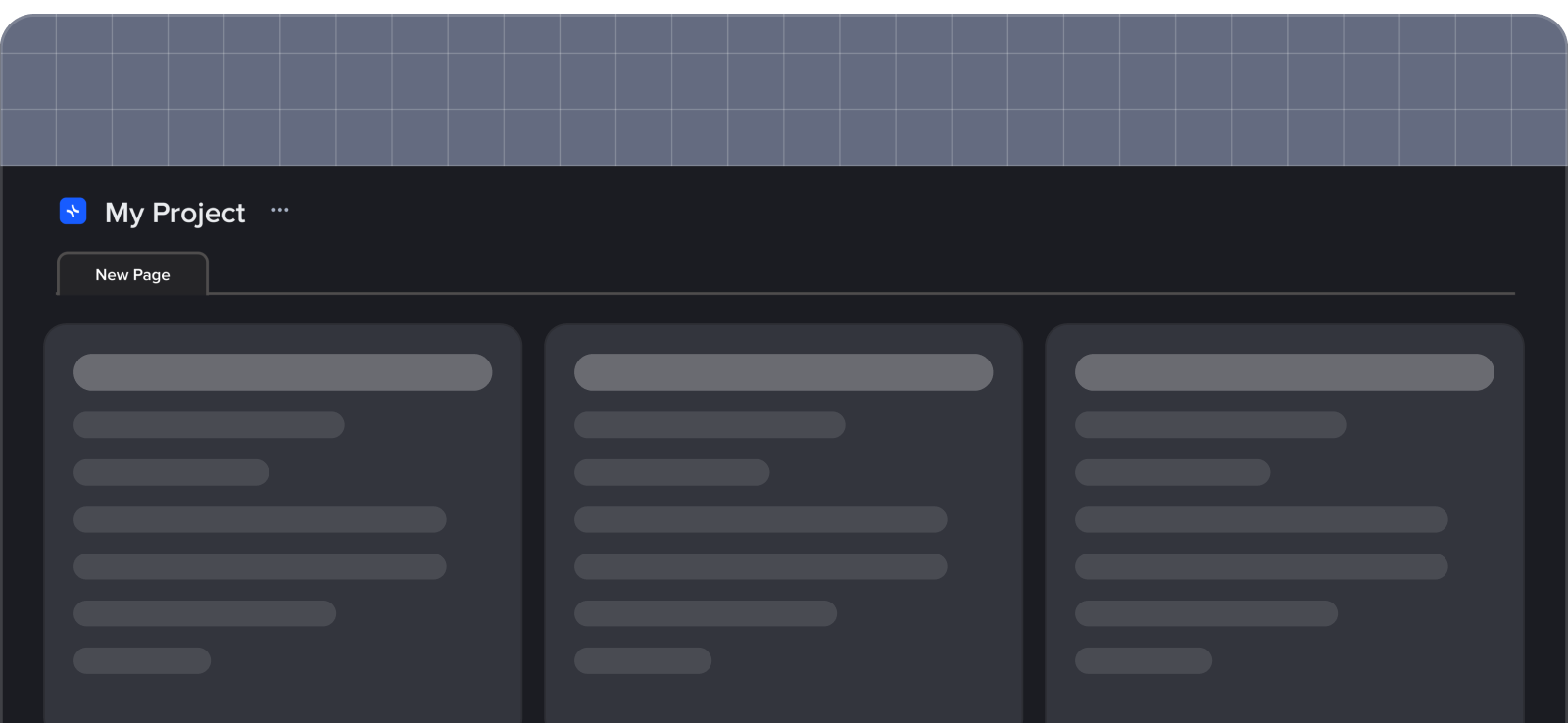Changes are hard, but not as hard as staying where you don’t belong or where you don’t feel like yourself. A challenge tracker enables people to track their progress and results in a particular challenge or goal, motivating them to keep moving.
Challenge Tracker is commonly used in fitness challenges, wellness programs, and productivity challenges, but it can also be used for other types of challenges, such as fundraising or academic competitions. However, challenge tracker templates make them suitable and easily applicable to almost any occasion.
A 30-day challenge tracker is optimal for establishing new habits, changing routines, seeing the first results of working out or dieting, etc. One month is not too much, yet it is enough to learn something new and better understand yourself.
The xTiles 30-Day Challenge Tracker is customizable to fit any type of goal. Users can add content that will motivate them and help them remember why they have started in the first place, and track the progress day-by-day, step-by-step.
We also offer you an example of a challenge tracker and a quick guide on how to create the most popular tracker in a way that will be effective and convenient for you and your lifestyle.
Challenge tracker template
When starting something new or changing a lifestyle, a person needs all the support they can find. Challenge tracker templates are the frameworks that help maintain consistency throughout the challenge.
They shorten the time people need to spend preparing, which usually puts out the impulse for changes. Instead of creating a tracker from scratch, people may use a pre-designed template that can be tailored to their specific needs and goals.
Also, ready-to-use templates often have pre-defined goals, metrics, and timelines, which may help people set realistic targets, bring new ideas, and stay on track toward achieving them.
When the 30-day period is finished, your challenge tracker can be useful for analysis and evaluation purposes. You will see how well you’ve done, what was particularly hard, and what was quite easy, and you will see what you liked and what you hated about your challenge.
Pre-designed templates may become a source of inspiration and ideas for different types of challenges. People can explore different templates and adapt them to their own needs and preferences or customize them to reflect their unique goals and circumstances.
The number of available challenge tracker templates with examples is impressive. For example, the 30-day workout challenge, probably the most popular challenge out there, can be found in different variations suitable for beginners or tough gym rats, for people with diseases such as bad knees, or people who want to concentrate on a certain part of their bodies, like 30-day arm challenge or 30-day butt challenge. There also are separate trackers for women and men, like a 30-day ab challenge for women and a 30-day ab challenge for men.
However, their number might rather mix things up, making it hard to find your own. That’s why creating your personal challenge tracker depending on your goal and preferences using a template is much safer.
Why do I need a 30-day challenge tracker?
People may use challenge trackers for several reasons.
- Trackers help people set specific goals and track their progress toward achieving them, which can increase motivation and accountability, like a 30-day fitness challenge.
- Trackers can provide valuable insights and feedback on performance, which can help people identify areas for improvement and adjust their strategies accordingly, like a 30-day weight loss challenge.
- Trackers can be a fun and social way to participate in challenges with friends or peers, providing a sense of community and support, like with a 30-day song challenge.


